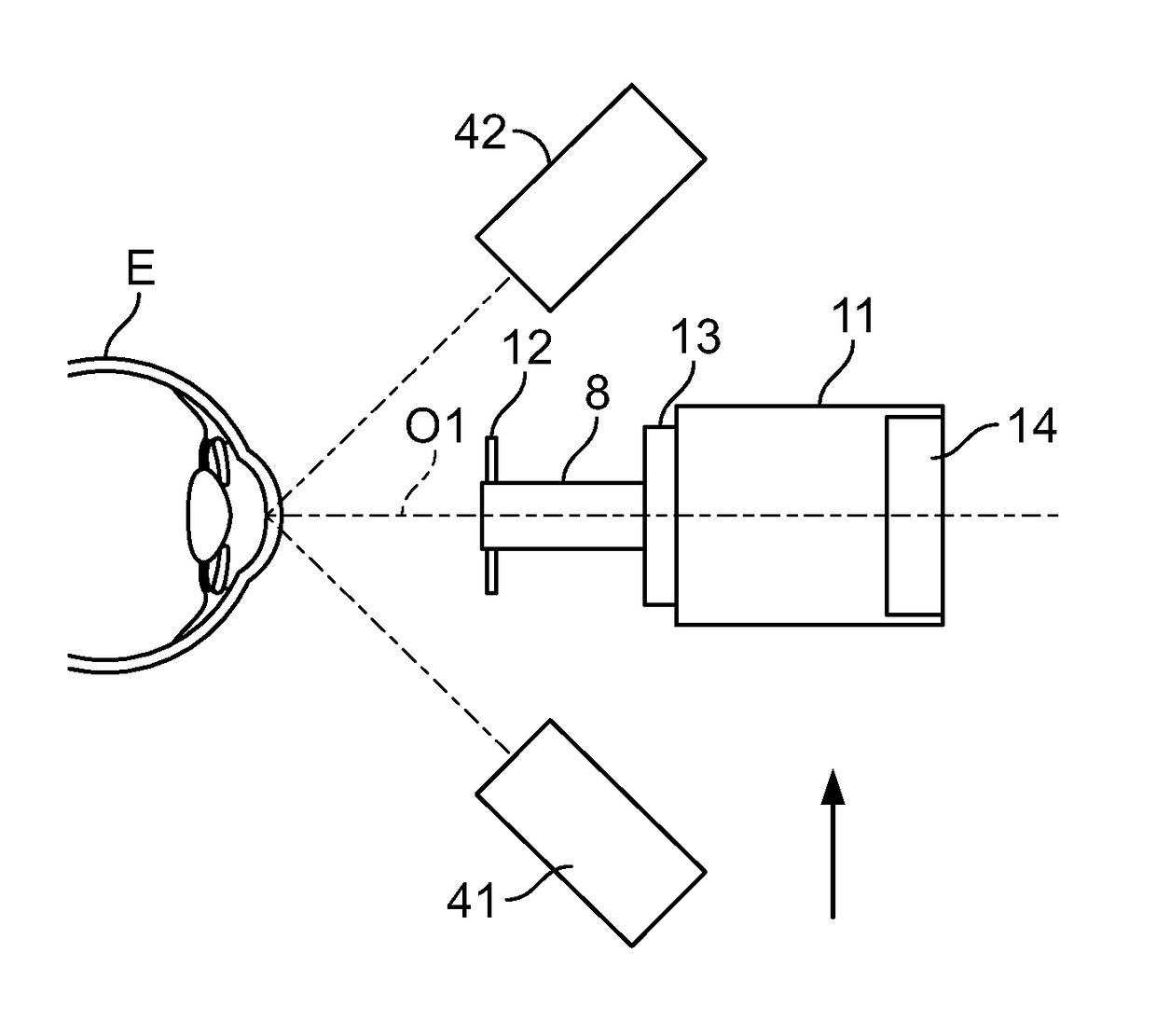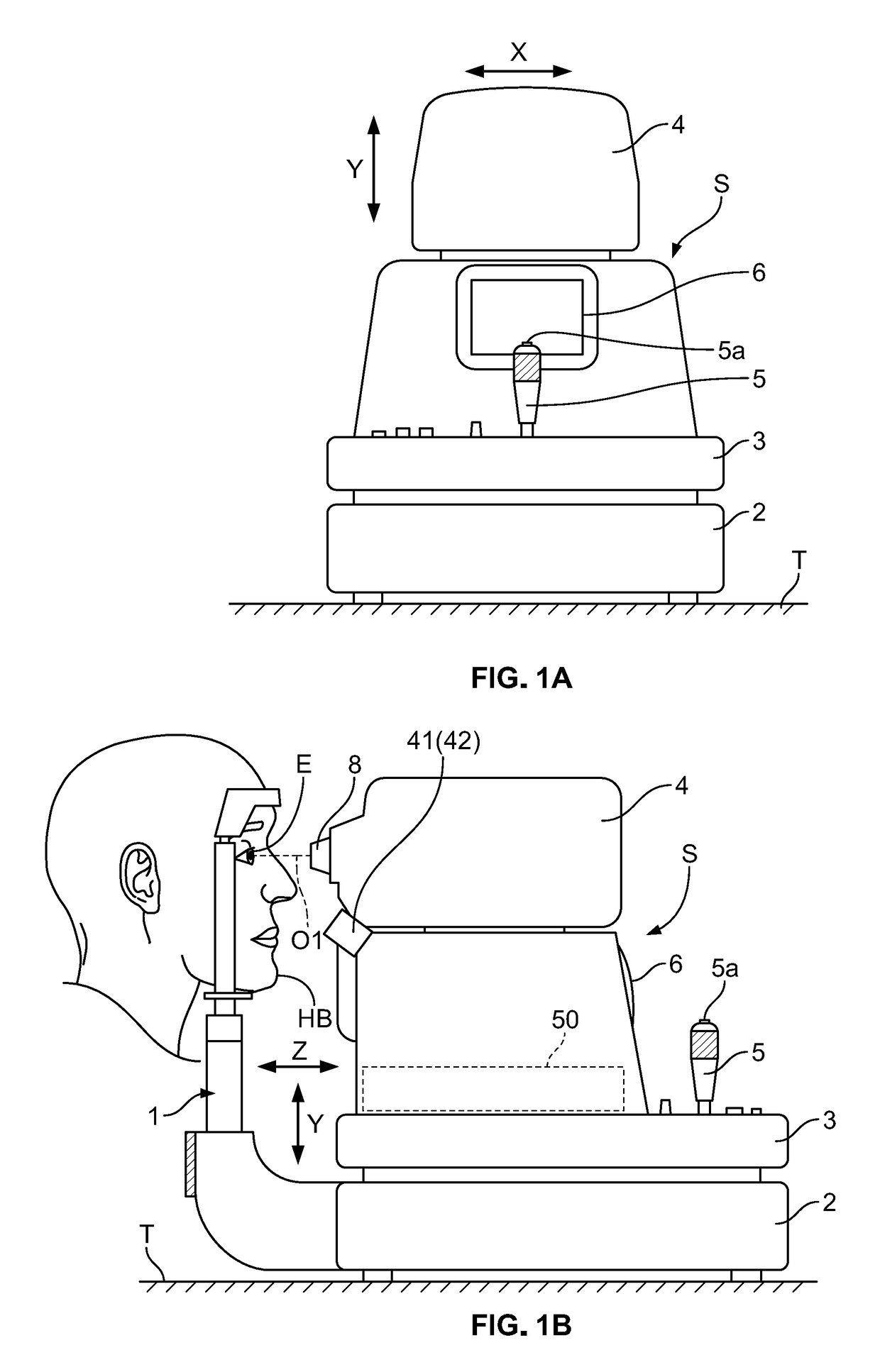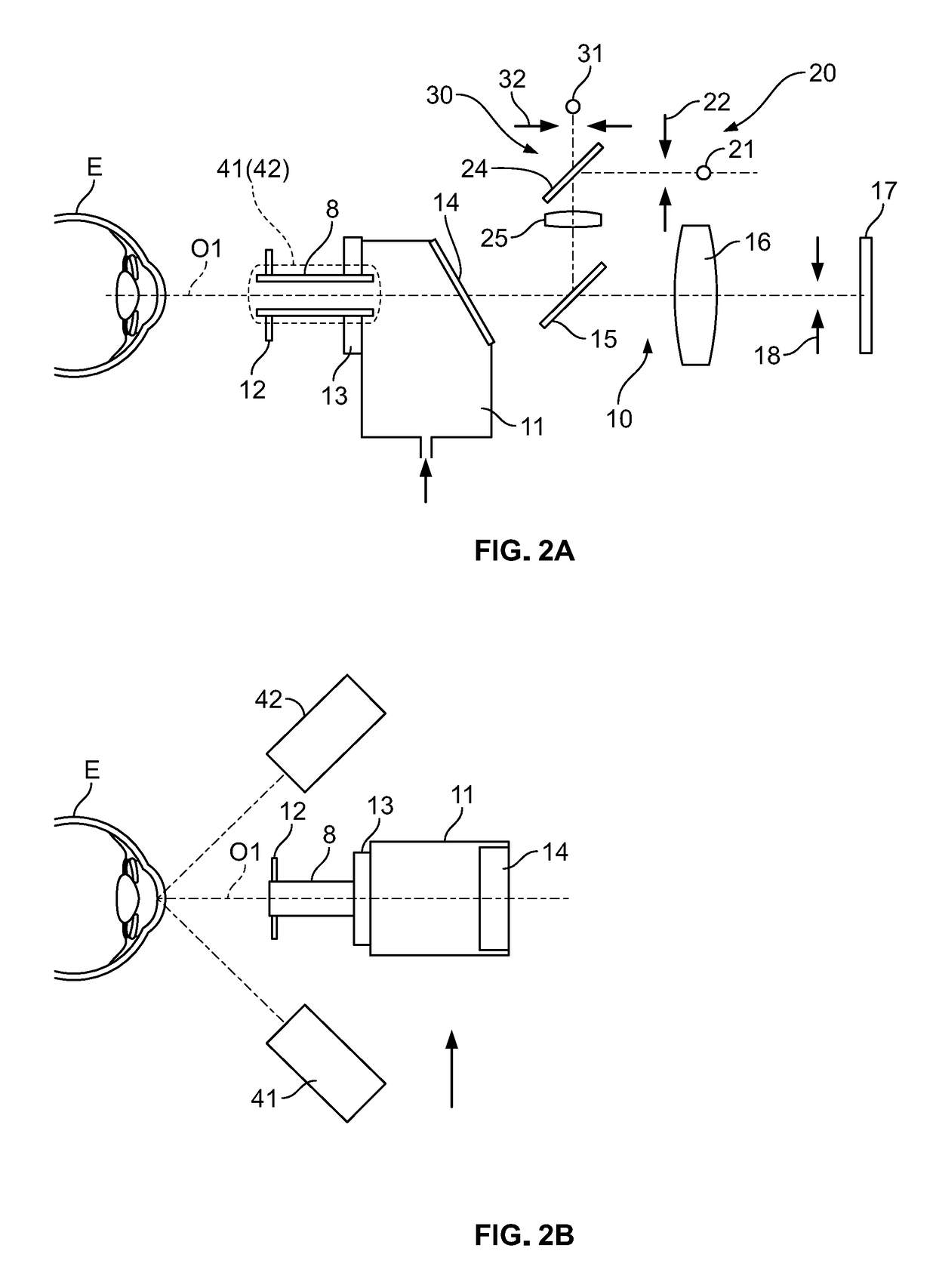Ophthalmic apparatus and alignment method for ophthalmic apparatus
a technology of ophthalmic apparatus and alignment method, which is applied in the field of ophthalmic apparatus, can solve the problems of inability to use devices requiring alignment with respect and the inability to position the vertex of the cornea
- Summary
- Abstract
- Description
- Claims
- Application Information
AI Technical Summary
Benefits of technology
Problems solved by technology
Method used
Image
Examples
second embodiment
[0103]In the above embodiment, the face cameras 41 and 42 have the same magnification. In the second embodiment, at least one of two face cameras has a larger photographing magnification than the other photographing device. FIGS. 10A to 10C are schematic views for explaining a non-contact tonometer according to the second embodiment of the present invention. In this case, a face camera 92 has a larger photographing magnification than a face camera 91. For this reason, as shown in FIG. 10B, although a whole subject's eye E appears in a photographed image 93 obtained by the face camera 91, an enlarged image of the pupil of the subject's eye E appears in a photographed image 94, originating from infrared light, obtained by the face camera 92. Note, however, that when the observation magnification is increased, the range in which the camera can photograph is narrowed. For this reason, in order to set the same observation range as that of a low-magnification camera, it is preferable to u...
PUM
 Login to View More
Login to View More Abstract
Description
Claims
Application Information
 Login to View More
Login to View More - R&D
- Intellectual Property
- Life Sciences
- Materials
- Tech Scout
- Unparalleled Data Quality
- Higher Quality Content
- 60% Fewer Hallucinations
Browse by: Latest US Patents, China's latest patents, Technical Efficacy Thesaurus, Application Domain, Technology Topic, Popular Technical Reports.
© 2025 PatSnap. All rights reserved.Legal|Privacy policy|Modern Slavery Act Transparency Statement|Sitemap|About US| Contact US: help@patsnap.com



